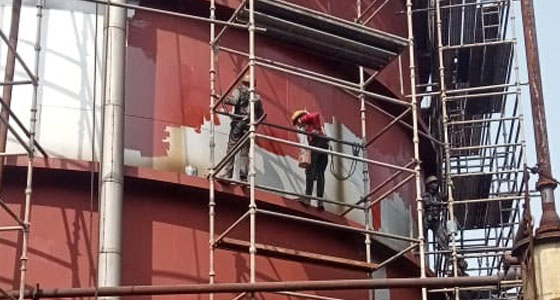Structural Painting
Structural Painting refers to the process of applying protective and decorative coatings to industrial structures such as bridges, factories, warehouses, pipelines, water tanks, offshore platforms, and other large-scale facilities. The primary purpose of structural painting is to protect the underlying materials, often metal or concrete, from environmental damage, corrosion, and wear, while also improving the structure’s appearance.

Key Components of Structural Painting
Surface Preparation
Surface Preparation
Proper preparation is essential to ensure adhesion and durability of the coatings. This may include methods such as:
- Sandblasting or abrasive blasting to remove rust, old paint, and contaminants.
- Pressure washing to clean surfaces.
- Chemical cleaning to eliminate oils, grease, and other residues.
Priming
Priming
A primer is typically applied as the first layer to enhance adhesion and provide an initial barrier against moisture, chemicals, and rust.
Coating Systems
Coating Systems
Industrial coatings often involve multiple layers, such as:
- Epoxy Coatings: Known for their strong resistance to chemicals and abrasion.
- Polyurethane Coatings: Used for UV resistance and color retention.
- Zinc-Rich Primers: Commonly applied for corrosion protection.
- Intumescent Coatings: Provide fire resistance by expanding when exposed to heat.
Environmental and Safety Considerations
- Compliance with regulations to minimize environmental impact (e.g., VOC emissions).
- Worker safety, involving protective equipment and training, especially when working at heights or with hazardous materials.
Application Techniques
Methods include spraying (airless or conventional), rolling, and brushing, depending on the project’s scale and complexity.
Importance of Structural Painting
Corrosion Control
Extends the lifespan of structures by preventing rust and degradation.
Structural Integrity
Helps maintain the strength and safety of critical infrastructure.
Aesthetics
Improves visual appeal, especially for structures in public areas.
Cost-Effectiveness
Reduces long-term maintenance and replacement costs.
